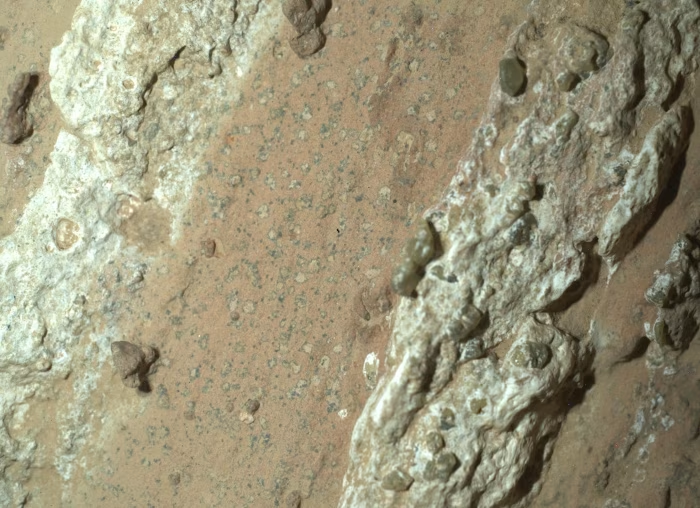Scientists may be edging closer to answering one of humanity’s biggest questions—was Mars ever alive? www.naijnaira.com reports.
The Perseverance Rover has been roaming Jezero Crater since 2021, and a recent discovery there has set the scientific world abuzz. According to Nature, a new analysis points to potential biosignatures hidden in Martian rock.
The rover drilled into a boulder called Cheyava Falls, a mudstone outcrop thought to date back 3.5 billion years. The sample, nicknamed Sapphire Canyon, contains strange greenish markings that hint at a chemical process linked to ancient microbial activity.
Researchers say these leopard-like spots could signal redox reactions, where microbes once interacted with the Martian environment, leaving behind minerals such as vivianite and greigite.
“This is the first time that chemical processes consistent with—though not definitive proof of—a biological origin have been observed,” said physicist Christian Schröder.
The discovery site, Bright Angel, is part of a rugged terrain near the Neretva Vallis valley. Its mudstone layers, rich in clay and silt, are perfect at preserving microscopic traces of life.
Joel Hurowitz, a Perseverance scientist, explained, “The chemical compounds found here could have powered microbial metabolisms, but we needed to be sure what the signals really meant.”
If verified, the findings would suggest microbes thrived on both Earth and Mars simultaneously, rewriting our understanding of life’s resilience.
Michael Tice, one of the study’s co-authors, noted, “That could be telling us something really profound about how life evolves.”
Mars missions have teased this mystery before. Curiosity detected organic compounds in ancient mudstones in 2018, while the Spirit rover identified a hot spring environment that hinted at habitability.
For now, the evidence remains trapped in Martian rock until a sample-return mission is launched, a project still on the drawing board.
Scientists stress that only high-precision instruments on Earth can confirm whether these mineral and organic structures truly stem from life.
Even if the process takes decades, each finding moves humanity closer to cracking the history of our neighboring planet.
Article updated 3 weeks ago. Content is written and modified by multiple authors.





